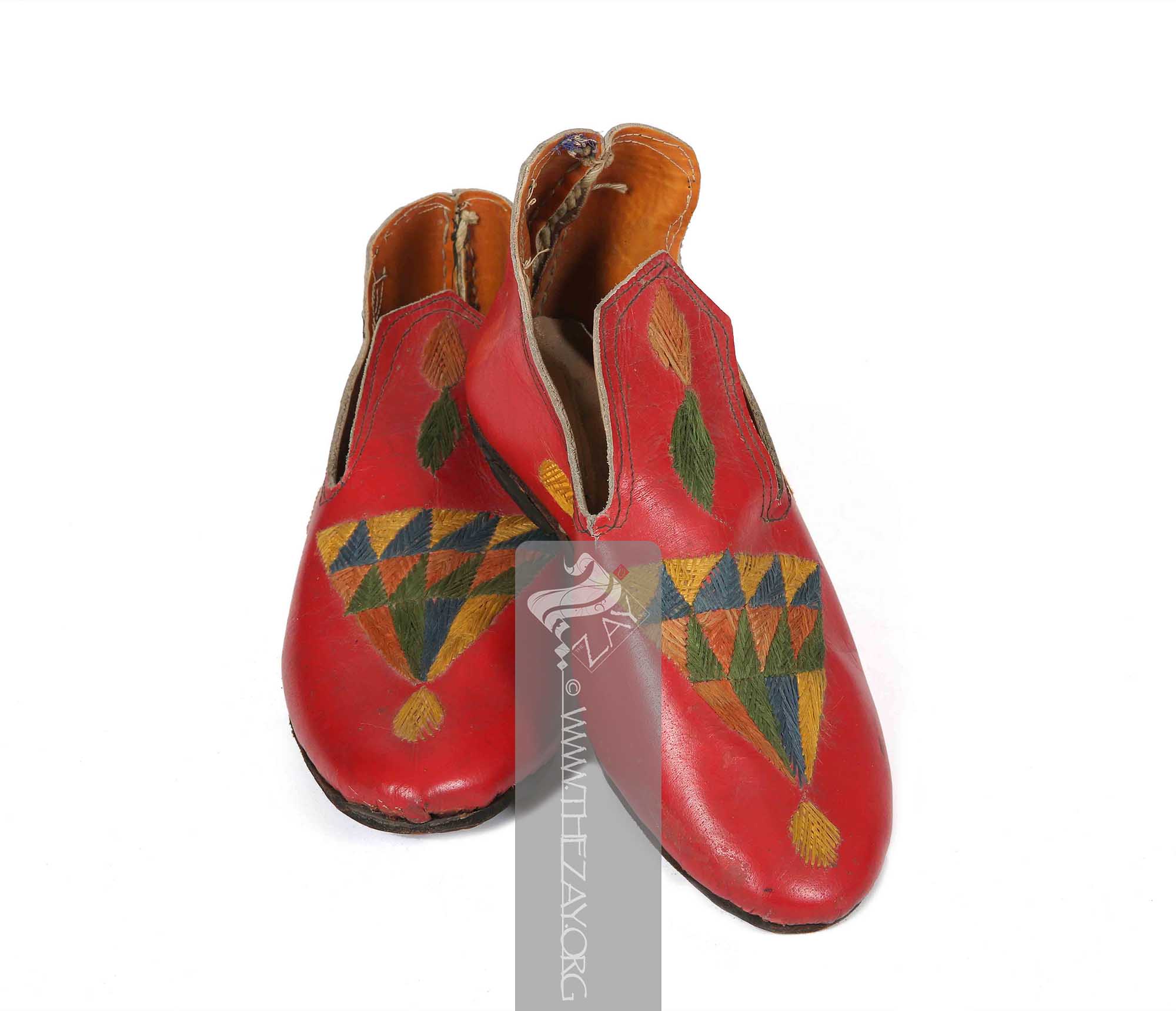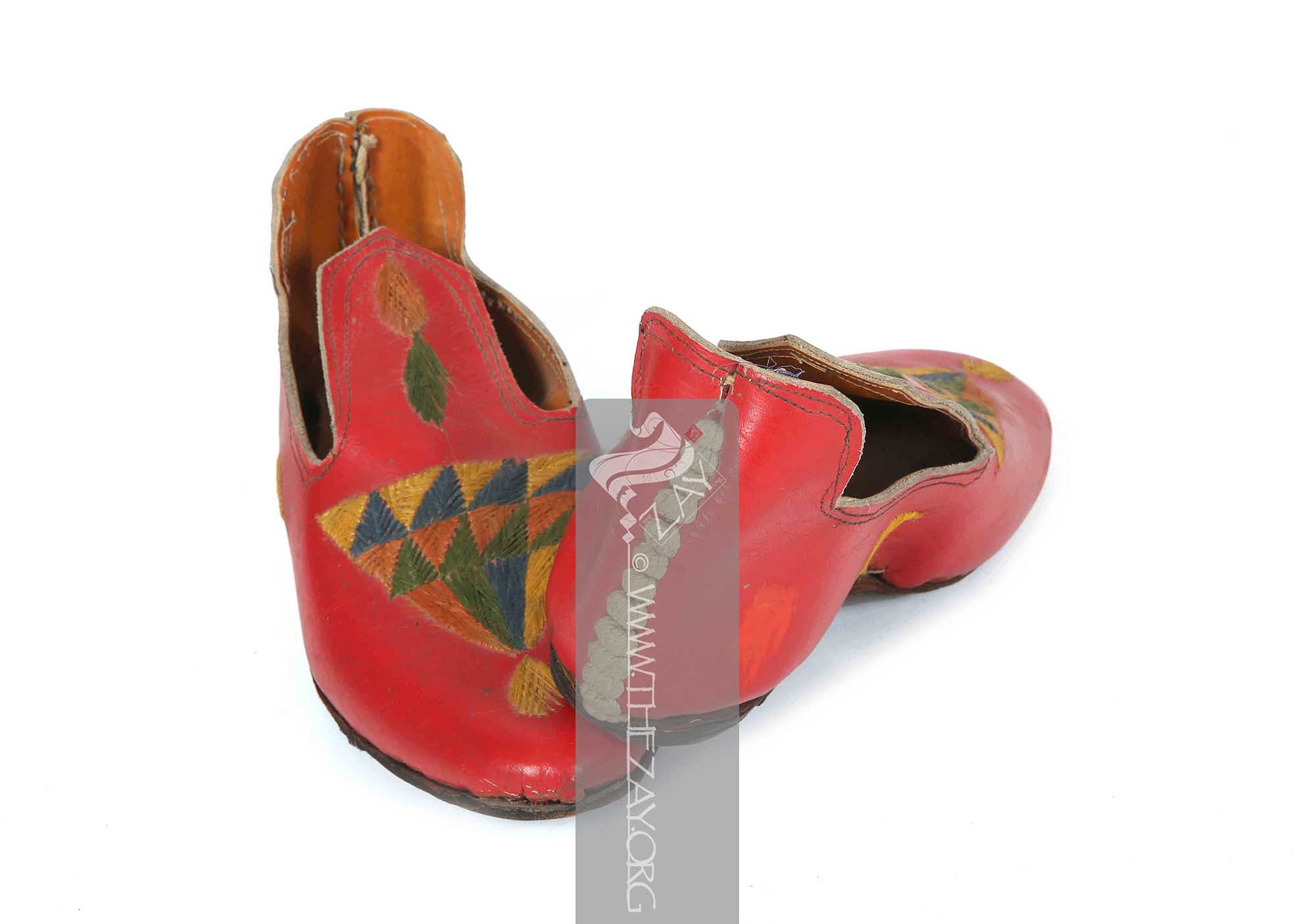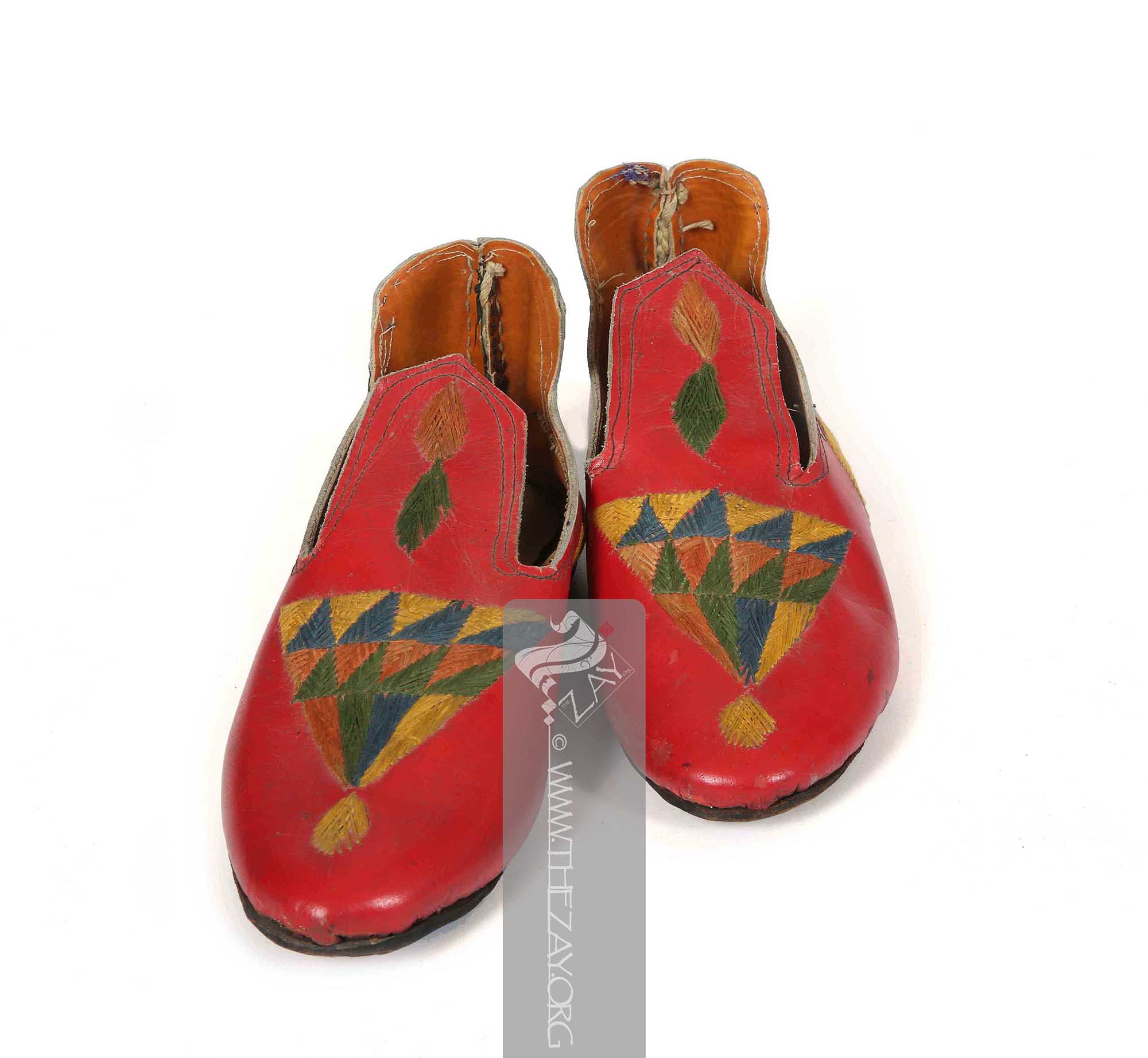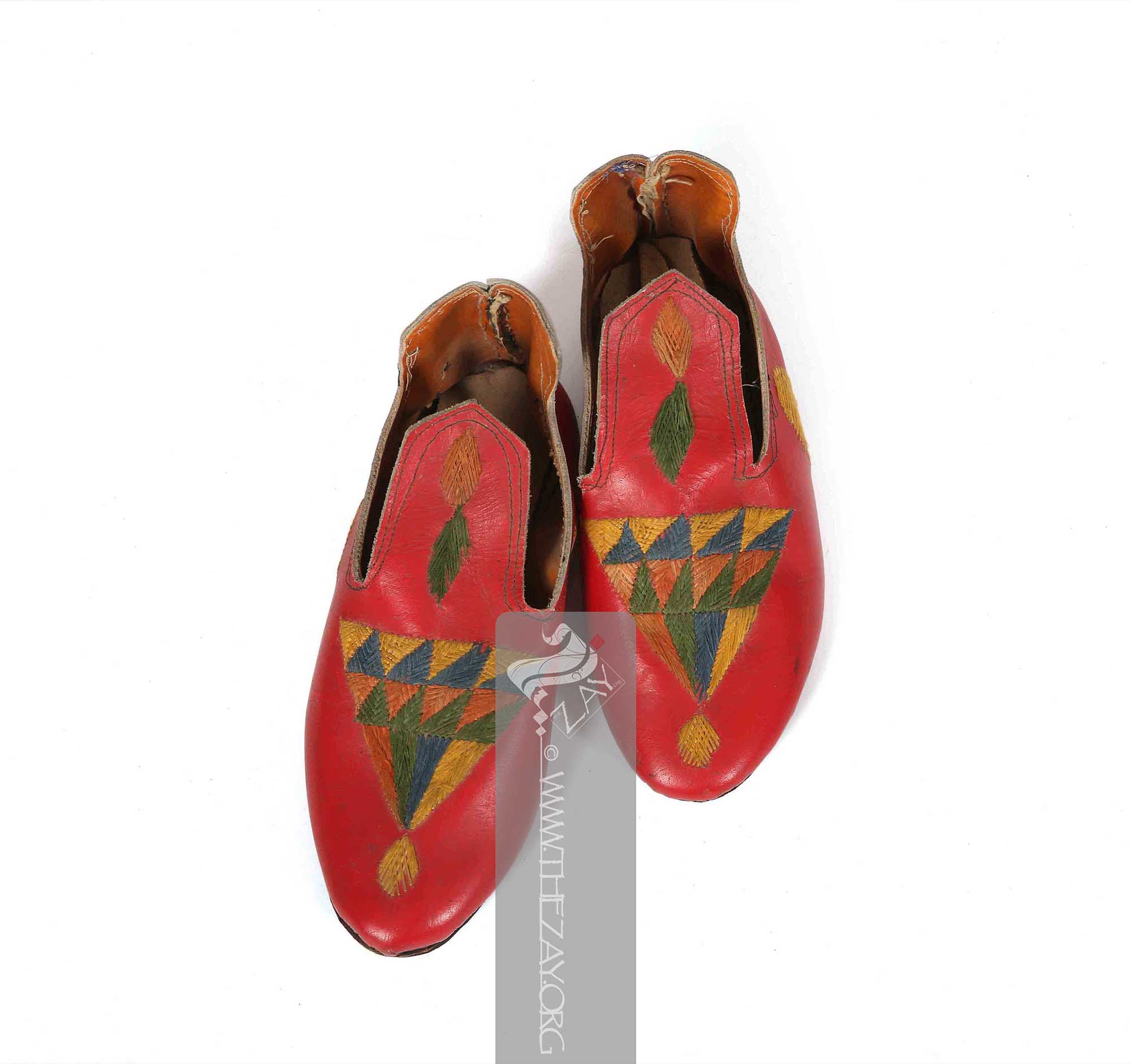







| Local Name | Markub |
| Object Category | Accessory |
| Gender | Female |
| Date of object | c. 19th – 20th century |
| Place Of orgin | Egypt |
| Region | Siwa |
| Object Range | Egypt |
| Dimensions | Size 37 |
| Materials | Leather Silk |
| Technique | Hand Stitched Hand Embroidered Other |
| Color | |
| Motif | Geometric |
| Provenance | Purchased, Anonymous, Egypt 2021 |
| Location | The Zay Zay: (Arabic: costume, Pl. azyaā’), a set of clothes in a style typical of a particular country or historical period. Initiative |
| Status | In Storage |
| ZI number | ZI2021.500954f EGYPT |
Object Note
Part of a lot with six more items (ZI2021.500954 EGYPT, ZI2021.500954a EGYPT, ZI2021.500954b EGYPT, ZI2021.500954c EGYPT, ZI2021.500954d EGYPT, and ZI2021.500954e EGYPT) also in the collection.
Object History
This piece was purchased by Dr. Reem Tariq
Ṭariq: (Arabic; Synonym: tulle_bi_talli
Tūlle_bi_tallī: (French: Tulle – a city in France where fine material for veil was first made; Turkish: tel – wire; Synonym: tariq; talli; badla; khus_dozi ), series of small metal knots made on a woven net ground as embellishment. The term is commonly used in the North African Arab region specifically in Egypt. Ṭariq: (Arabic; Synonym: tulle_bi_talli
Tūlle_bi_tallī: (French: Tulle – a city in France where fine material for veil was first made; Turkish: tel – wire; Synonym: tariq; talli; badla; khus_dozi ), series of small metal knots made on a woven net ground as embellishment. The term is commonly used in the North African Arab region specifically in Egypt.
Originally part of the Shahira Mehrez collection, the piece was purchased by a previous collector who remains anonymous to The Zay Zay: (Arabic: costume, Pl. azyaā’), a set of clothes in a style typical of a particular country or historical period.. Ms Mehrez graciously guided Dr Reem and The Zay Zay: (Arabic: costume, Pl. azyaā’), a set of clothes in a style typical of a particular country or historical period. in sourcing the item from them for the benefit of The Zay Zay: (Arabic: costume, Pl. azyaā’), a set of clothes in a style typical of a particular country or historical period. Initiative.
Ms. Shahira Mehrez is recognized as one of Egypt's foremost costume historians and collectors, and she serves as an honorary advisor to The Zay Zay: (Arabic: costume, Pl. azyaā’), a set of clothes in a style typical of a particular country or historical period. Initiative. Born into an affluent Egyptian family during the British occupation, Ms. Mehrez was educated in French schools, with French often being the language spoken at home. Nevertheless, her family was committed to ensuring she learned Arabic and hired a religious teacher to help her memorize the Quran.
Ms. Mehrez is the author of Costumes of Egypt: The Lost Legacies and holds a postgraduate master's degree in Islamic art and architecture, a field she pursued after discovering her passion for Egyptian heritage and folklore, despite originally earning an undergraduate bachelor's degree in chemistry. She has been deeply dedicated to preserving Egyptian handicrafts, folklore, and traditional costumes, spanning from ancient Egyptian civilization to the present day. In her efforts to expand her research, Ms. Mehrez has collected various traditional costumes from twelve different regions across Egypt.
Object Features
This is a pair of slip-on style shoes (markub), possibly from the Siwa oasis, constructed of red leather and embellished with embroidery. While the front of the shoe features a large triangle composed of smaller triangles embroidered in (satin_stitch Satin_stitch: (Synonym: Damask Stitch), is a type of flat embroidery stitch that creates a satin like smooth and shiny surface by closely spaced stitches, covering an entire area or shape.) style with orange, green, blue, and yellow silk floss Floss: (Old French: flosche – nap of velvet), is a type of silk fibre obtained from the cocoons of wild silkworms. It is characterized by its long, fluffy fibers that are not tightly woven, making it ideal for use in various textile applications such as embroidery, lace-making, and sewing. threads, topped with a small rhomboidal shape, the sides display a small leaf-like shape in yellow on either side. The front near the ankle has two rhomboidal shapes in orange and green. The back of each pair has a braided ivory cord that possibly acts both as a stitch and a decoration running vertically down the middle of the ankle. The pair has a leather sole with thin heels.
Links